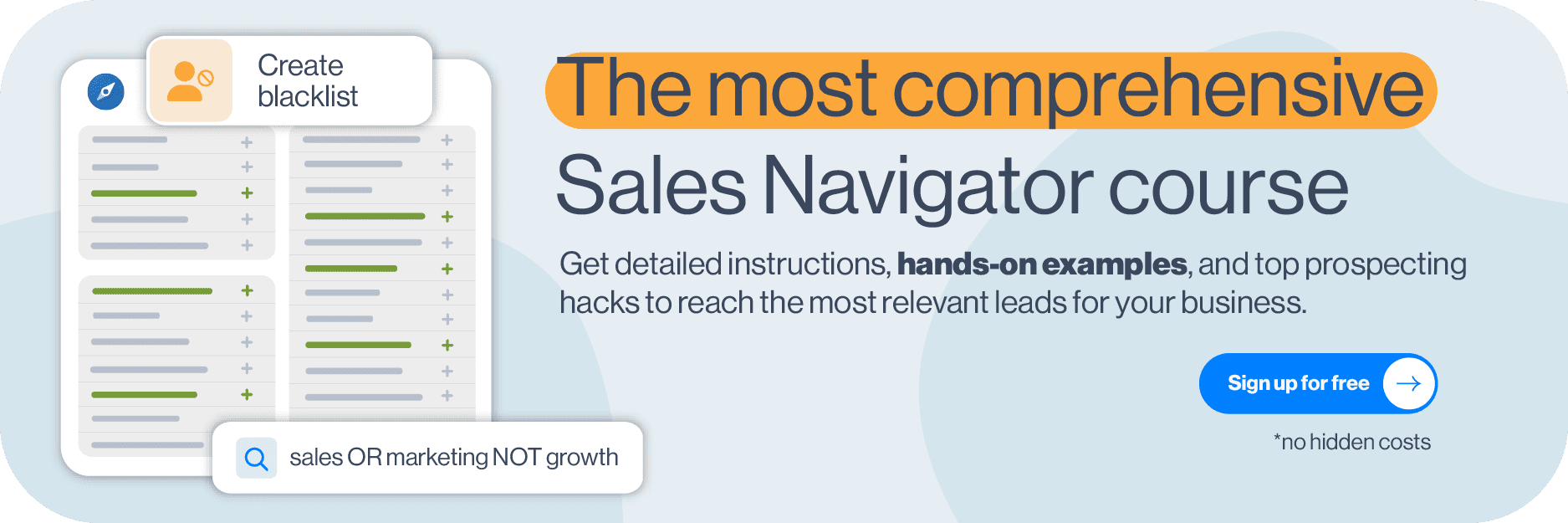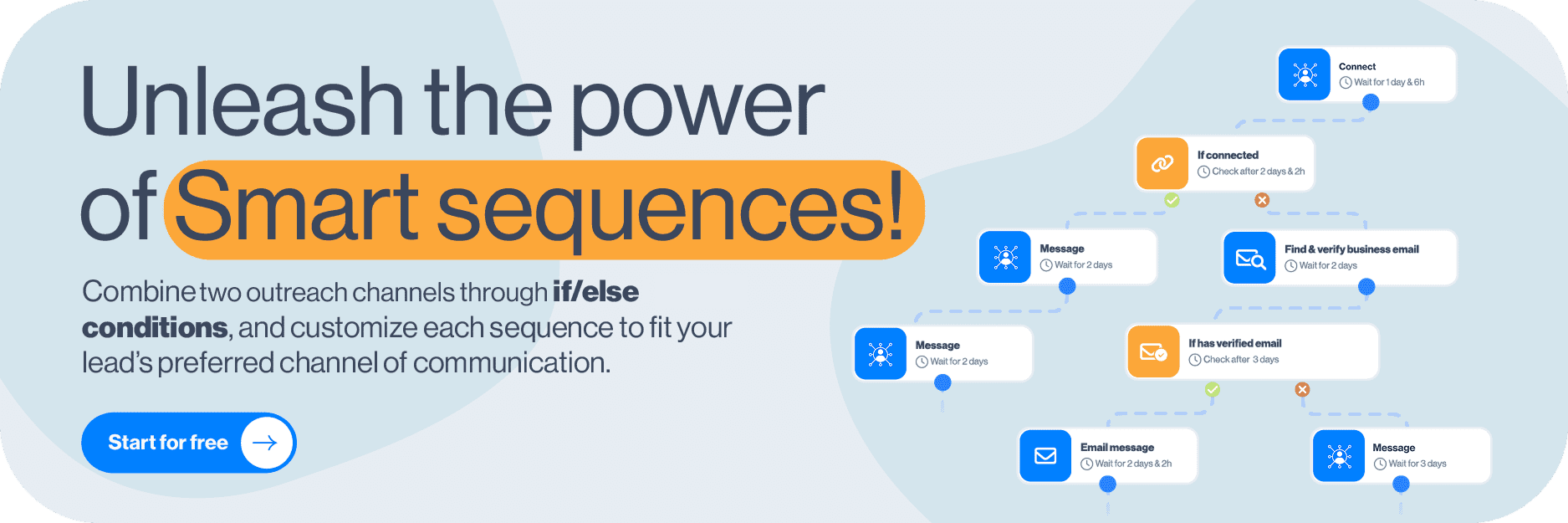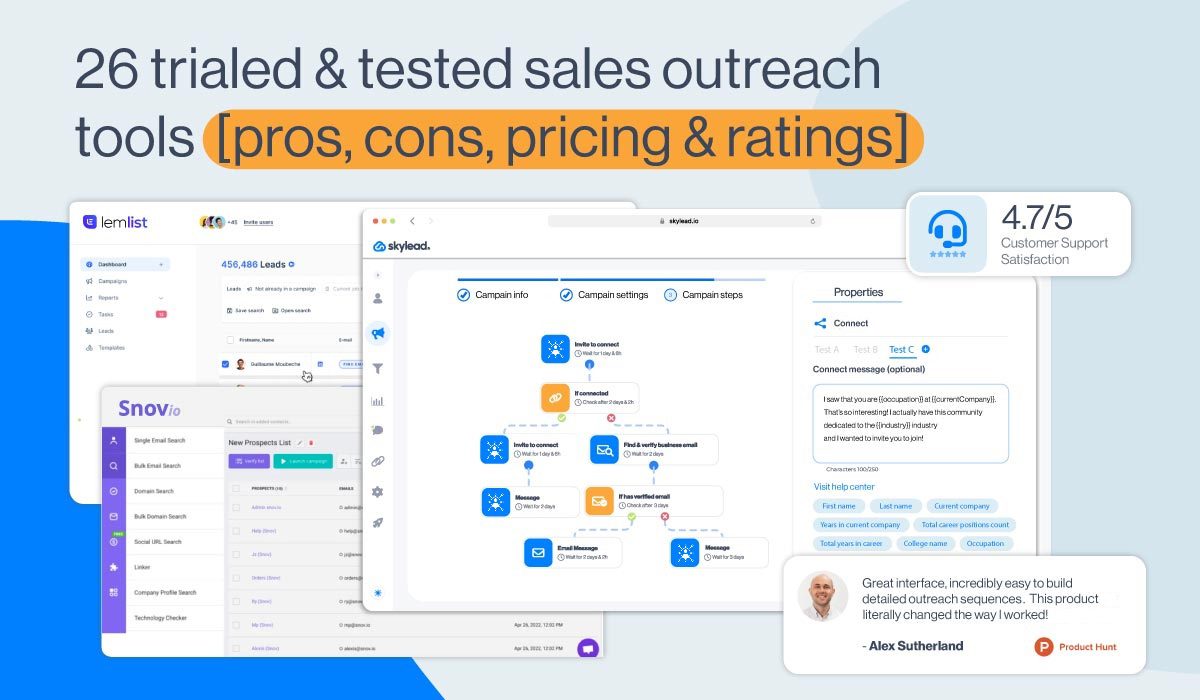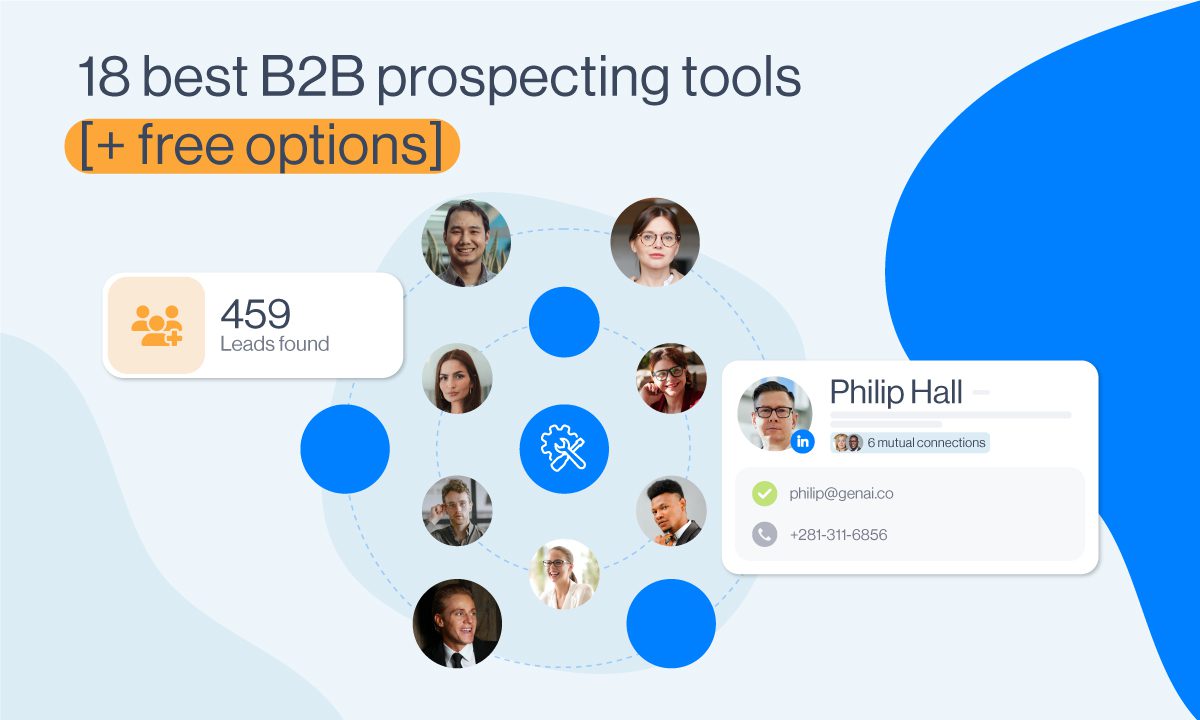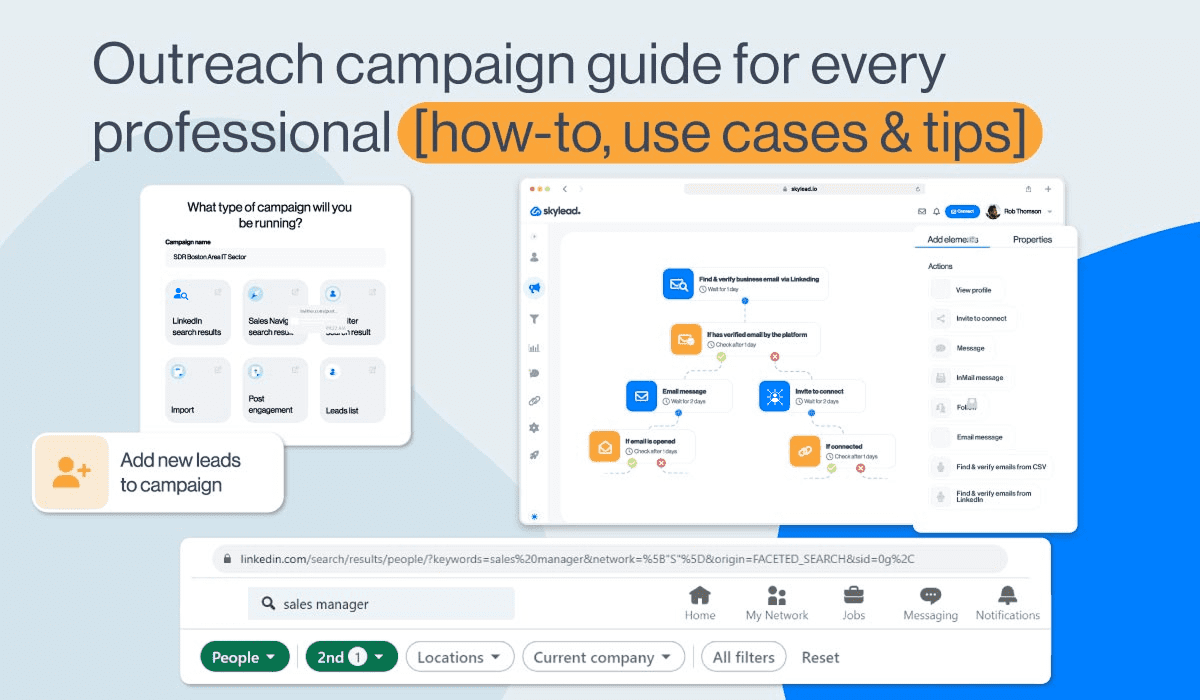What is lead acquisition? Top 10 strategies for companies in 2025

Disclaimer: Skylead is not affiliated, endorsed by, or connected with LinkedIn in any way.
Lead acquisition is the process of obtaining potential clients or leads and guiding them through the sales funnel toward conversion. Additionally, it involves capturing, filtering, and nurturing leads until they are ready to make a purchase.
For businesses, lead acquisition is decisive as it forms the foundation of their customer acquisition strategy. With a steady stream of qualified leads, companies can sustain growth and profitability.
That’s why, to keep their lead acquisition process afloat, businesses primarily utilize lead generation systems. To clarify, a lead generation system is a comprehensive software designed to help you gather, attract, speak with and convert leads into paying customers.
Now let’s dive into what lead acquisition is and how it differs from lead generation, and why they are inseparable. Also, we will show you some highly effective tactics that you can use to get more clients in the future.
What is a lead?
A lead is an individual or organization demonstrating an interest in purchasing the products or services offered by a business. In other words, it represents a potential customer who has engaged with the company. This could involve filling out a form or subscribing to a newsletter.
What is lead acquisition?
Lead acquisition is the process of obtaining potential customers and guiding them toward becoming qualified leads. It involves capturing, filtering, and integrating leads into the lead acquisition funnel for further nurturing and conversion.
Lead acquisition may include activities such as,
- Lead generation through marketing campaigns and other inbound strategies to attract potential customers,
- Networking or building relationships within relevant industries and communities,
- Or engaging with prospects through outbound strategies such as multichannel outreach.
The primary goal of lead acquisition is to build a pool of qualified leads and convert them.
1. Lead generation
This is about attracting possible customers, getting their contact details and reaching out to them. For example, you can do this by sharing content, reaching out on social media, and making your website visible to search engines manually.
However, you can also automate part of your lead generation process.
Automated lead generation involves using software tools and processes to gather, attract, and engage potential leads without manual intervention. In other words, these tools streamline the outreach process in lead generation, enabling businesses to reach a larger audience more efficiently.
Skylead is one such tool that facilitates automated outreach in lead generation, particularly using LinkedIn and email. To clarify, Skylead is a sales engagement tool and cold email software designed to streamline and optimize outreach efforts for businesses. It offers features such as:
| Feature | Description |
| Multichannel Outreach | It also enables users to combine different channels, maximizing touchpoints with leads and enhancing engagement possibilities. |
| Smart Sequences | Skylead offers Smart sequence capabilities for building personalized multichannel flows with if/else conditions, ensuring effective lead acquisition. |
| Email Discovery & Verification | It provides a native feature for discovering and double verifying email addresses of potential leads, ensuring accurate contact information for successful outreach efforts. |
| Image & GIF Personalization | Skylead allows users to personalize outreach with images and GIFs, enhancing response rate and memorability for potential leads. |
But more on this later. 😊
2. Market dominance
Apart from getting leads, you should also become a top player in your field. In other words, this means being known as a reliable source of information and solutions in your industry. It also involves establishing trust in your field. You can do this by consistently offering valuable content and engaging with your leads.
You can easily do this by using simple lead acquisition marketing tactics.
Again, you either do it manually (that will take a lot of time) or automate the entire process using smart tools like Skylead.
With Skylead, you can effortlessly establish yourself as a thought leader in your industry by automating the expansion of your LinkedIn network. Here’s how 👇
| Action | Description |
| Become a Thought Leader | Expand your LinkedIn network on autopilot to establish yourself as an industry authority. |
| Share Content Campaigns | Use campaigns to distribute posts on LinkedIn and other content to your network. Thus, ensuring engagement even if they missed your posts. |
| Promote Events with Smart Sequences | Utilize Smart Sequences to promote events and connect with attendees through LinkedIn and email. |
| Manage Conversations in Skylead's Smart Inbox | Streamline LinkedIn conversations by managing them all within Skylead's Smart Inbox feature. |
| Re-engage Network with View & Follow Steps | Incorporate View & Follow steps in sequences to maintain engagement and re-engage your network. |
3. Lead qualification, nurturing and conversion
In this step, firstly, figure out which leads are most likely to buy from you. For example, look at things like how interested they are, their budget, and how much say they have in their organization. By scoring and dividing leads, you can focus your efforts on the ones most likely to become customers.
Once you start talking to your leads, personalize your messaging and address their pain points precisely to successfully nurture them. Lastly, prepare your objection handling rebuttals to ensure lead conversion.
What are lead acquisition models?
Businesses deploy various lead acquisition models to optimize their customer acquisition process. Some of them are as follows:
- Firstly, Inbound marketing and sales attracts leads through valuable content, SEO, and social media engagement. This model focuses on drawing prospects to the business naturally for sales.
- Secondly, outbound marketing and sales means reaching out to possible customers by calling, emailing, or advertising to them directly. It's a proactive way for businesses to connect with potential buyers for selling purposes.
- Thirdly, the referral-based lead acquisition model relies on leveraging existing customer networks to generate new leads. Businesses can tap into a network of pre-qualified leads by incentivizing current customers to refer others.
- Fourthly, the strategic partnerships model allows businesses to collaborate with complementary companies to access each other's customer bases. This model leverages shared audiences to expand reach and acquire new leads.
- Lastly, the event-based lead acquisition model involves participating in industry events, conferences, and trade shows to connect with potential leads face-to-face. These events provide opportunities for direct interaction and relationship-building with prospects.
Lead generation Vs. Lead acquisition - Difference between lead generation and lead acquisition
In the customer acquisition process, people often interchangeably use lead acquisition and lead generation, but they represent distinct phases.
Lead generation involves collecting contact information from potential customers interested in a product or service. Additionally, depending on the organization, lead generation may be handled by either the marketing or sales department. Here’s how they differ:
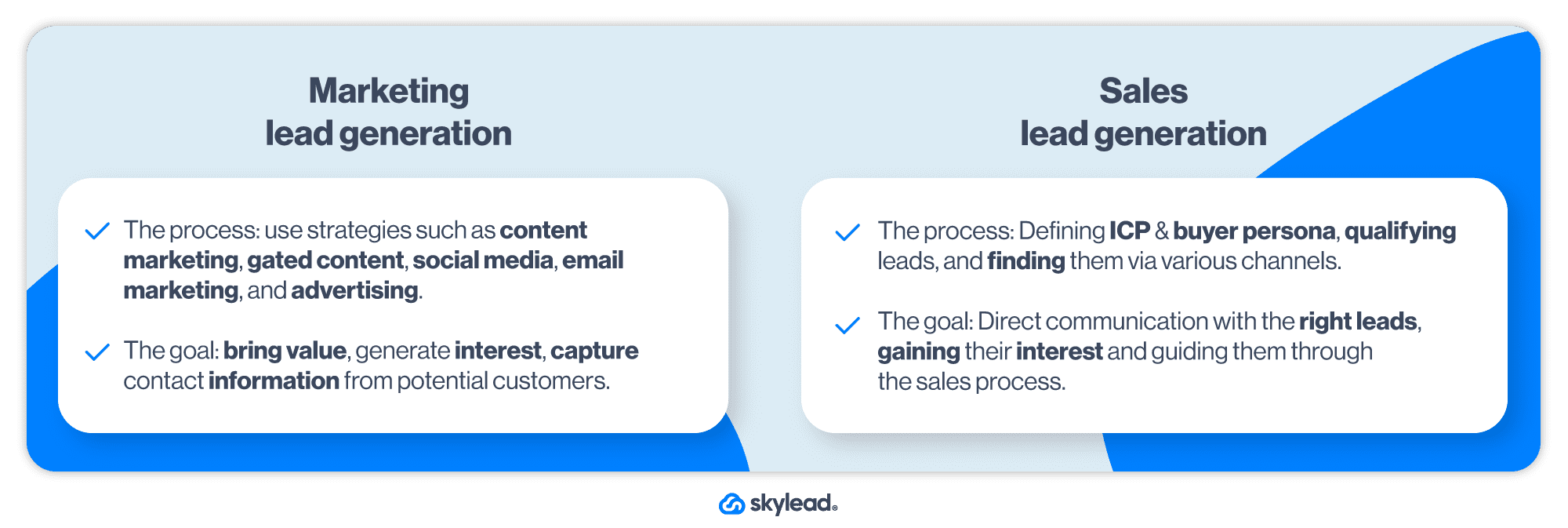
On the other hand, lead acquisition involves filtering and nurturing these leads to convert them into qualified prospects.
The primary difference (between lead generation and acquisition) lies in the timing and scope of engagement with potential customers.
Lead generation focuses on initiating contact and capturing interest, while lead acquisition goes one step further. It encompasses a broader set of activities aimed at qualifying and nurturing leads until they are ready for conversion.
Essentially, lead generation is about generating raw leads, while lead acquisition involves refining these leads for the sales process.
Here’s a summary of the main differences between the two terms.
| Aspect | Lead Generation | Lead Acquisition |
| Definition | Lead generation involves capturing potential customers' interest. | Lead acquisition encompasses gaining, filtering, and incorporating leads into systems. |
| Focus | Emphasizes attracting leads through marketing and sales efforts. | Focuses on obtaining, filtering, and preparing leads for conversion. |
| Process | Involves activities like, Marketing > content, SEO, and PPC. Sales > prospecting, initial contact, qualification and booking a meeting. | Includes lead nurturing, segmentation and closing. |
| Ownership | Businesses generate leads internally or through campaigns. | Leads can be acquired internally or through various channels and partnerships. |
| Timing | Happens before the lead enters the sales funnel. | Occurs after lead generation, preparing leads for conversion. |
Best lead acquisition strategies for improved ROI & conversion
Maximizing ROI through lead acquisition strategies involves a mix of tactics customized to your target audience and industry. Here are a few methods you can consider.
1. Quality over quantity
Prioritize quality over quantity when it comes to lead acquisition.
Focusing solely on generating a high volume of leads may be tempting. But, as we previously mentioned, it is important to ensure that these leads will be genuinely interested.
Invest time and resources in targeting prospects who align closely with your ideal customer profile (ICP) and buyer persona. By focusing on quality, you can increase the likelihood of securing valuable conversions and improve your return on investment (ROI).
Trust us—from our experience, a smaller number of high-quality leads can yield better results than a large volume of unqualified leads. Moreover, a large volume of leads can exhaust your time and resources with significantly worse results.
2. Qualify your leads
The more you qualify your leads, the better results you will get. So, to sort out leads for proper lead qualification, determine the following:
- Your business’s ICP (Ideal Customer Profile).
- Buyer Persona.
Your ICP (Ideal Customer Profile) outlines the characteristics of your ideal company, such as industry, company size, and specific pain points your product or service addresses.
Similarly, creating buyer personas helps you understand your potential customers better by identifying their needs, challenges, goals, and purchasing behaviors.
After you have established your ICP and buyer personas, you'll determine which leads are most likely to buy from you.
You can take into account factors such as,
- your lead’s level of interest,
- their budget,
- and their decision-making power within their organization (i.e., their status within the company).
By scoring and categorizing leads, you can focus your efforts on those most likely to convert into customers.
Once you have a clear understanding of your leads, nurture them by providing personalized content and valuable resources. Personalize your communication to address their specific needs and interests, guiding them through the sales funnel.
3. Check for intent
Some platforms, such as LinkedIn Sales Navigator or G2 offer information about Buyer Intent. This allows sales professionals to identify and prioritize potential leads based on their level of interest in your business.
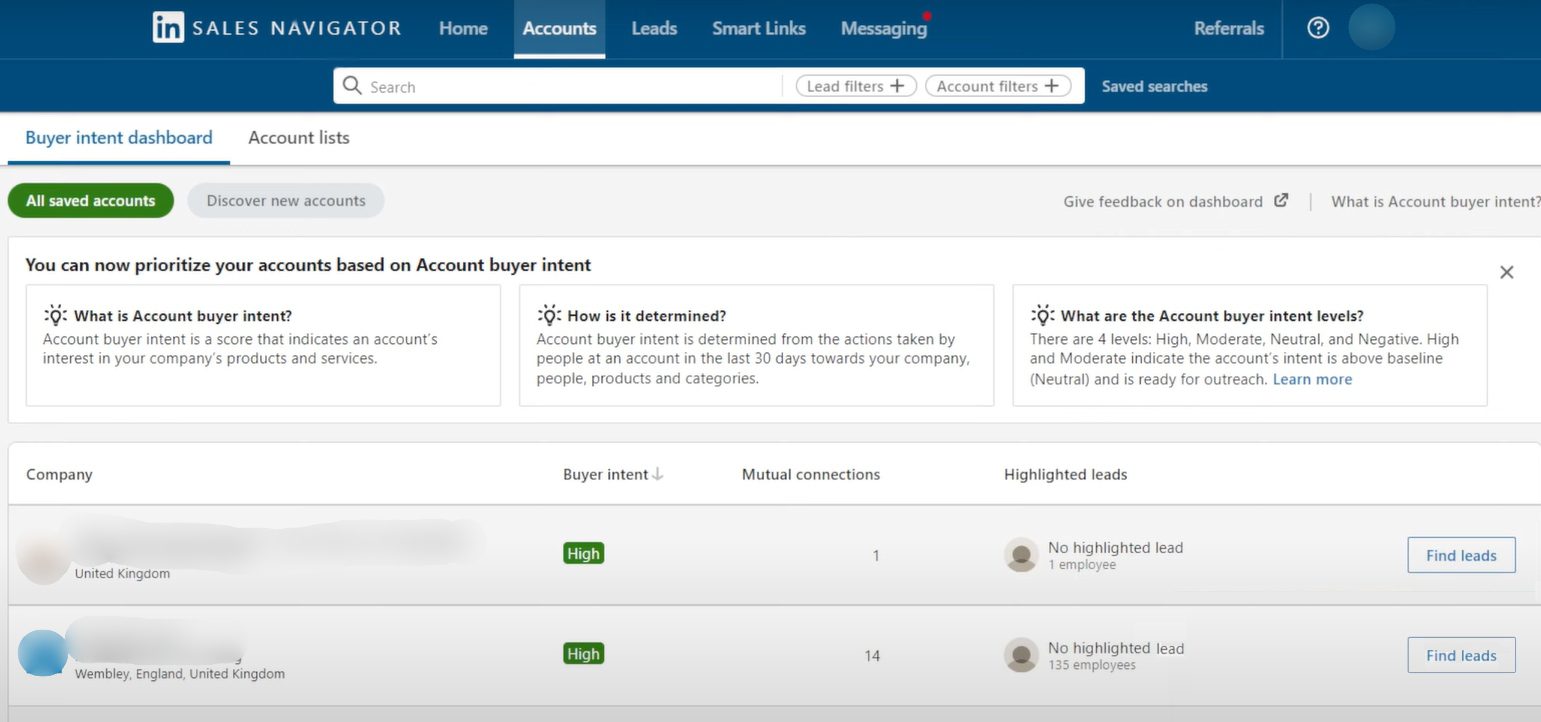
That said, if you have the budget, you should check out these platforms and test their power. We know we have. 🙂
4. Monitor entire customer journeys and use attribution
To improve ROI, it's important to monitor entire customer journeys and utilize attribution effectively. Attribution lets you connect marketing efforts and channels with actual purchases. This can give you ideas on how to get more customers in a smarter way.
Here's how you can monitor everything, depending on whether you belong to sales or marketing departments.
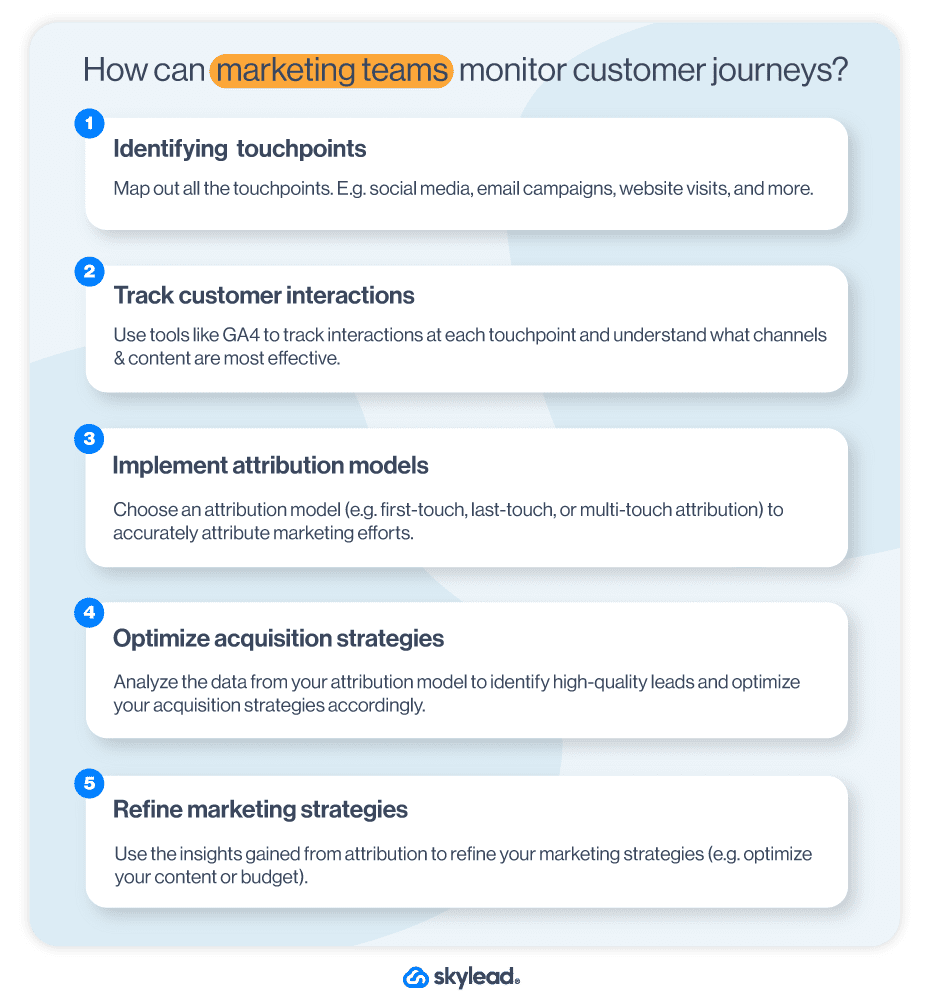
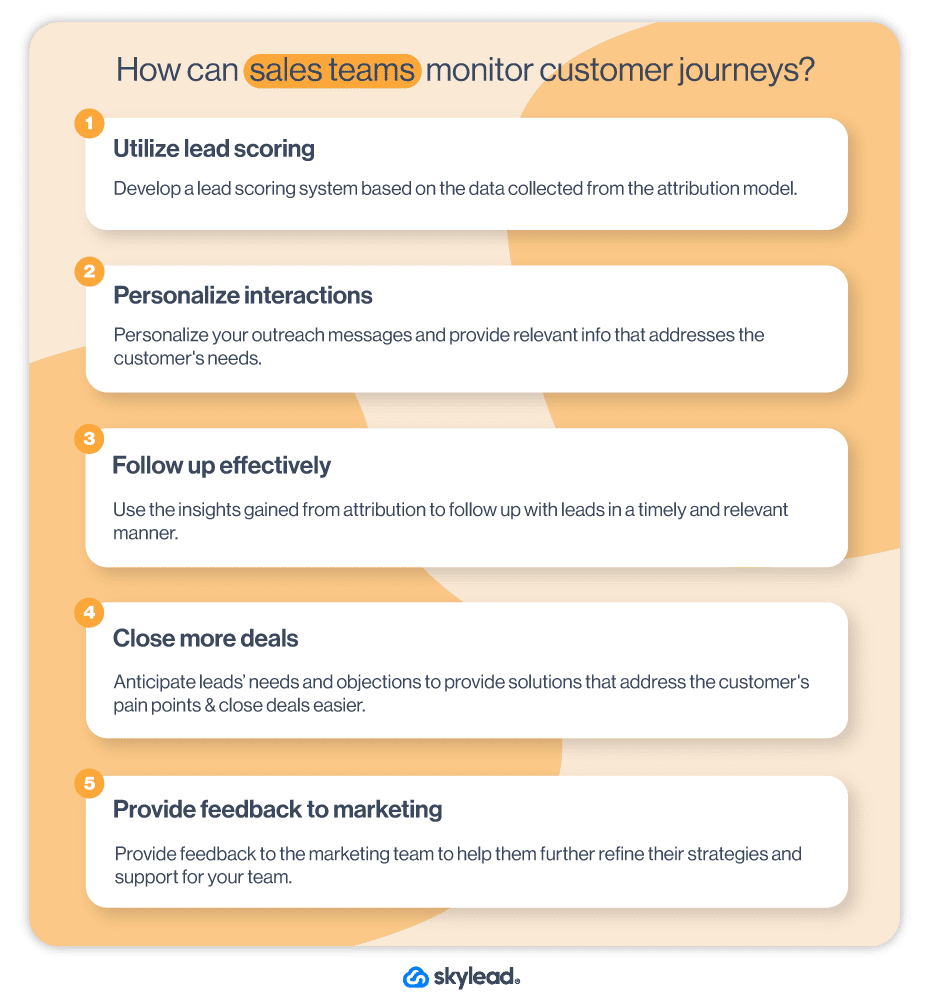
5. Lead segmentation
Segmentation is key to enhancing lead acquisition effectiveness. Sorting your leads based on various criteria such as demographics, acquisition channels, and behavioral traits. This helps you treat each group differently for better results.
For instance, leads from different channels may have varying levels of interest or engagement, requiring different nurturing strategies. Sorting leads helps you focus on the ones most likely to buy from you.
Segmentation also lets you give people content that suits them best, making them more likely to buy from you.
6. Do proactive lead acquisition for marketing and sales during the acquisition process
Businesses can employ a series of consistent strategic steps to enhance ROI through proactive lead acquisition marketing and sales efforts.
| Strategy | Description |
| Create personalized offer | Craft a unique offer custom to the audience's needs to entice action. |
| Warm-up leads | Provide value through educational content or insights to build trust and rapport. |
| Create lead magnets | Develop resources like eBooks or webinars to capture contact information and provide solutions. |
| Email marketing | Implement personalized email campaigns to nurture leads with relevant content and offers. |
| Blogging | Attract and engage potential customers by regularly publishing high-quality blog posts addressing their interests. |
| Sales Prospecting | Identify potential leads through various channels, including networking events, referrals, and social media platforms. |
| Conduct sales presentations | Deliver compelling sales presentations to educate prospects about your products or services and demonstrate how they can solve their problems. |
| Follow up consistently | Establish a systematic follow-up process to maintain communication with leads, answer their questions, and address any concerns they may have. |
7. Do what's been successful before
Figure out what has worked well in the past and focus on doing more of that. You can easily discover by analyzing your marketing campaigns, GA4 or outreach campaigns.
8. Make your lead interactions better
Improve how you communicate with potential leads to get them more interested and responsive. Adjust when and how often you reach out to them.
9. Look at the entire journey of your customers and identify patterns
Study how people become customers, noticing any common paths they take. This helps you understand what works and what doesn't in your marketing and sales efforts.
10. Get help from experts in lead generation or use outreach tool to generate leads
If you’re not sure how to set up and conduct lead acquisition, network on LinkedIn and reach out to some experts in the field. They might have advice that can make the process smoother and bring better results. After all, that’s what LinkedIn is all about.
Or, you can use an outreach tool like Skylead by yourself to generate leads to start with. These tools often provide access to advanced features that can streamline the process and bring better results.
Actionable example and steps to improve lead acquisition process
To help you out with your lead acquisition improvement, let’s go through actionable steps you can take. We will focus on the beginning stages of the lead acquisition process for sales up until the lead nurturing phase.
1. Lead qualification and prospecting
Lead qualification and prospecting are like creating a map for your sales journey. It involves understanding your potential customers and identifying where to dig for treasure.
Lead qualification is the process of determining how likely your leads are to buy your product or service. Prospecting, on the other hand, is about finding those potential customers in the first place.
To make this process effective, you need to define your Ideal Customer Profile and Buyer Persona. Be sure to check out both articles with easy and actionable steps to creating these documents.
This will help you gather the necessary information to revise your approach and increase the effectiveness of your lead qualification process.
Once you have your ICP and Buyer Persona clearly defined, you'll have a roadmap for your marketing and sales efforts.
Now, you can use that roadmap to begin LinkedIn prospecting.
To start with, use LinkedIn Premium or Sales Navigator filters to narrow down your search and identify potential leads. Ensure that your shortlisted leads fit your ICP and Buyer Persona criteria. If you’re using Sales Navigator, use Account filters to find your ICP, and Lead filters to find your buyer persona.
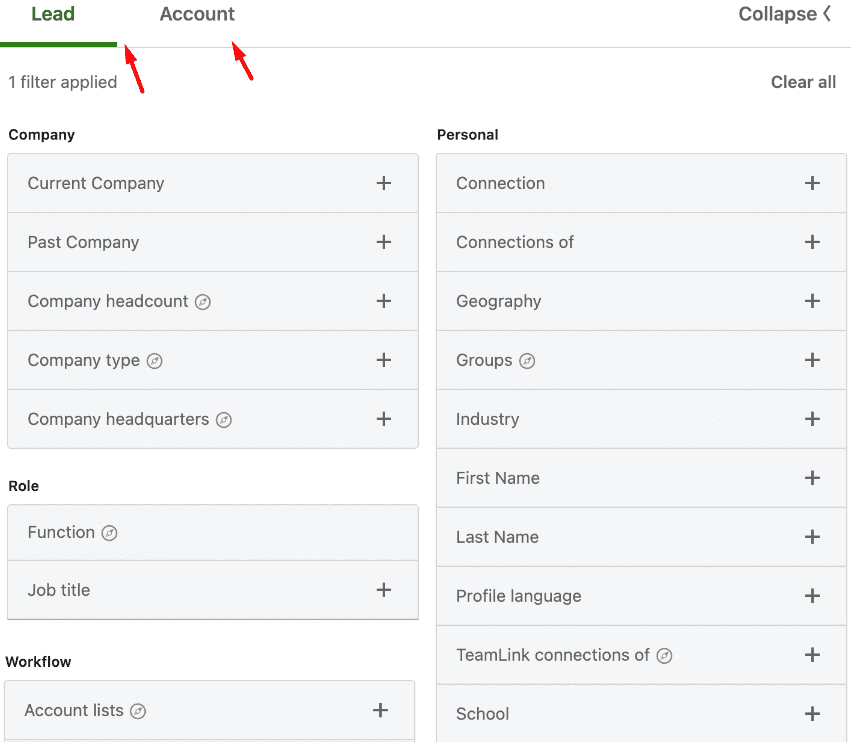
Once you have a list of your ideal prospects, copy that search URL for the next step.
2. Lead generation using Skylead
Once you have shortlisted your leads, you can create your outreach campaign.
As we said, you can use the different outreach tools. However, to demonstrate how to create a campaign, we’ll use our sales engagement tool and cold email software, Skylead.
Go to your campaign dashboard and hit the Create campaign button.
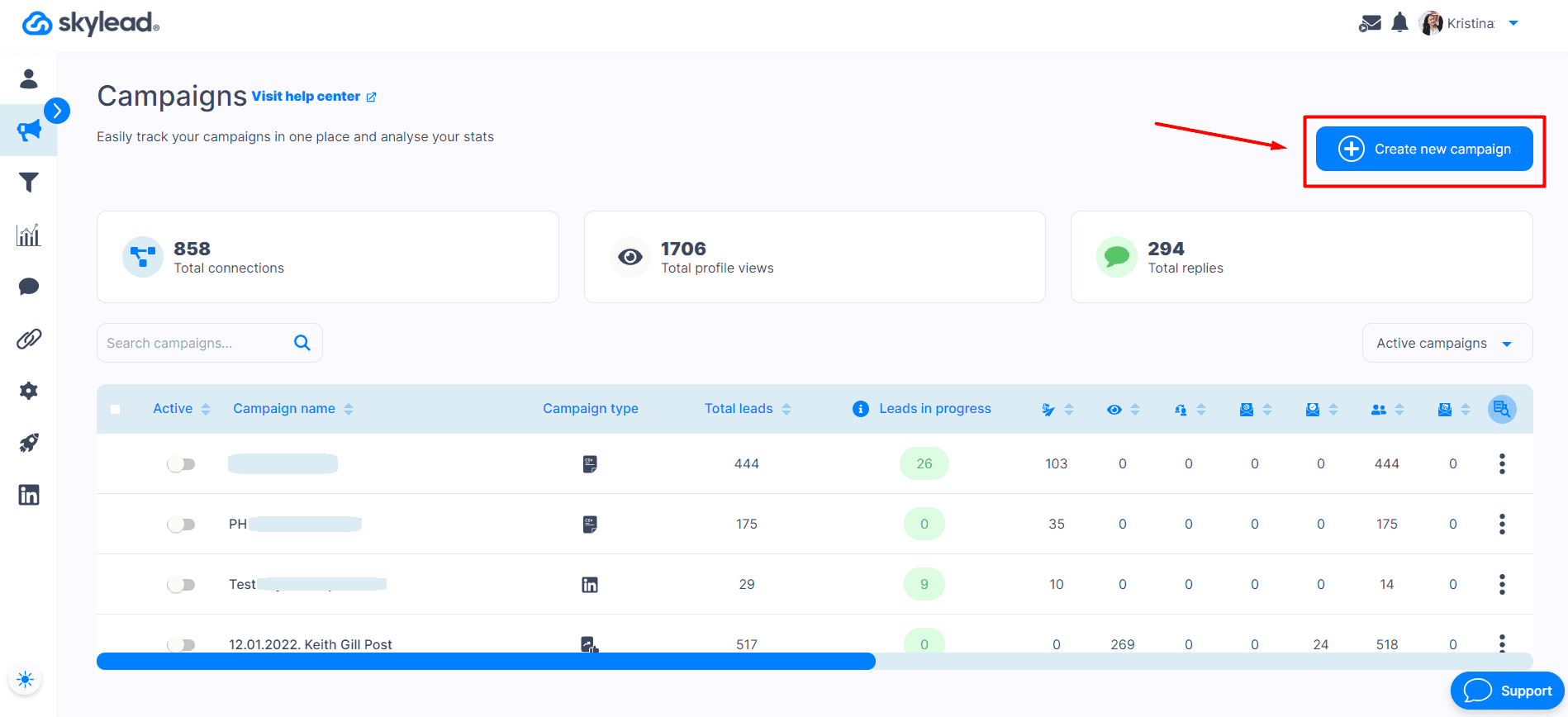
Choose among various sources to import leads into your campaign, and paste the URL you saved from the previous step. Next, name your campaign and move on to the following step.
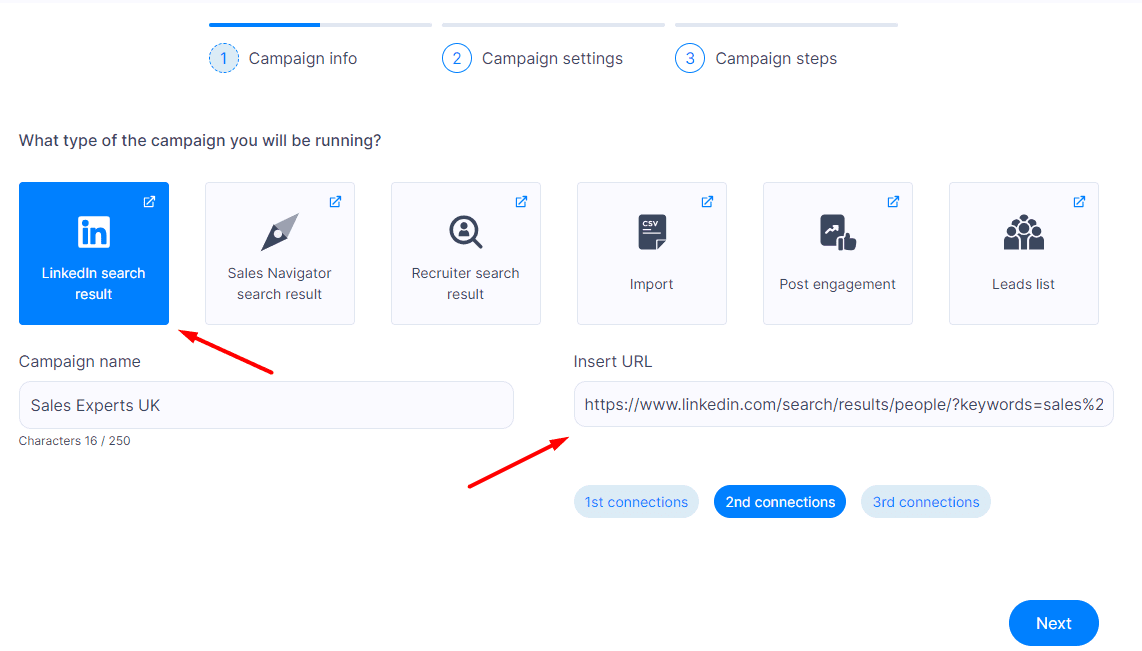
Here, you can set your additional email and LinkedIn settings.
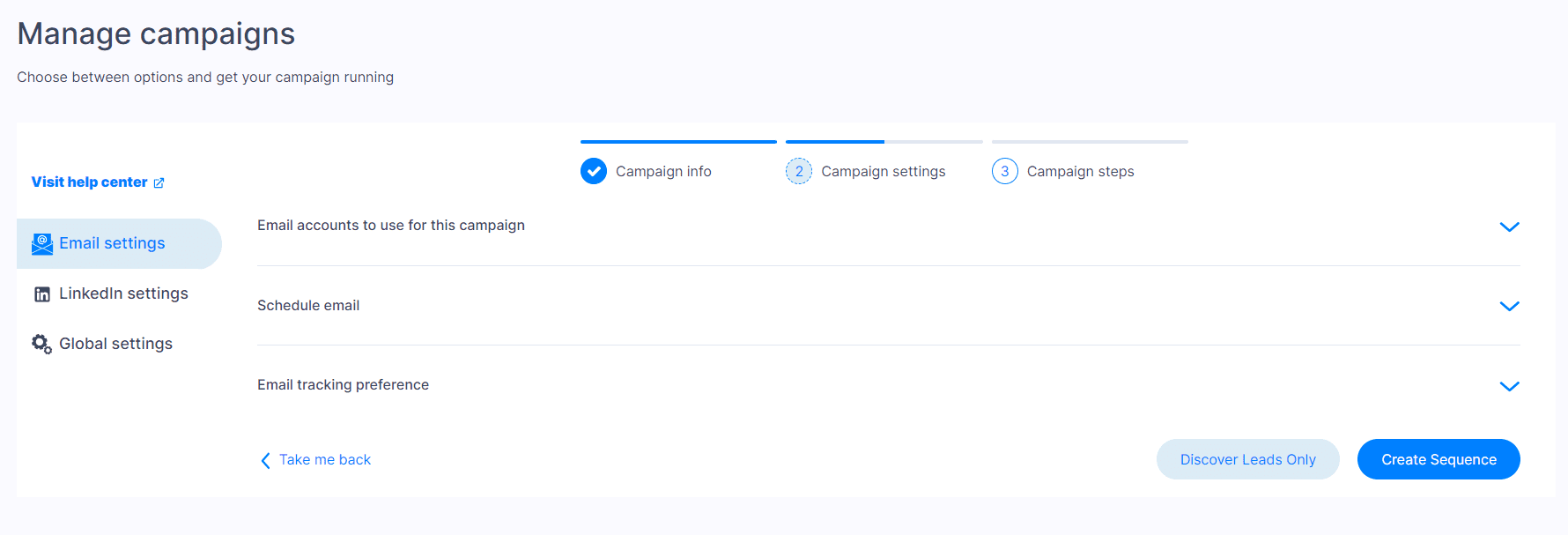
One of Skylead's feature is that you can add unlimited email accounts at no extra cost. Then, you can select all the emails you added, and Skylead will rotate them, bypassing the email limit. In other words, you can send thousands of emails and reach more leads faster.
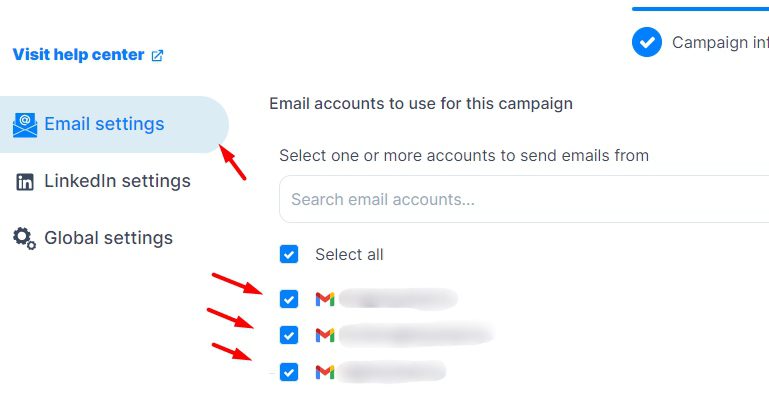
When you've finished tweaking your settings, hit Create Sequence.
This is a page where you create your Smart sequence. To clarify, a smart sequence is an algorithm you create, and Skylead will follow it to reach out to your leads, making your outreach more efficient and targeted.
To create one, drag and drop steps and conditions to create different scenarios, and Skylead will execute steps depending on each lead's behavior. However, if this is your first outreach campaign and you're unsure how to create one, you can also use our Smart sequence templates.
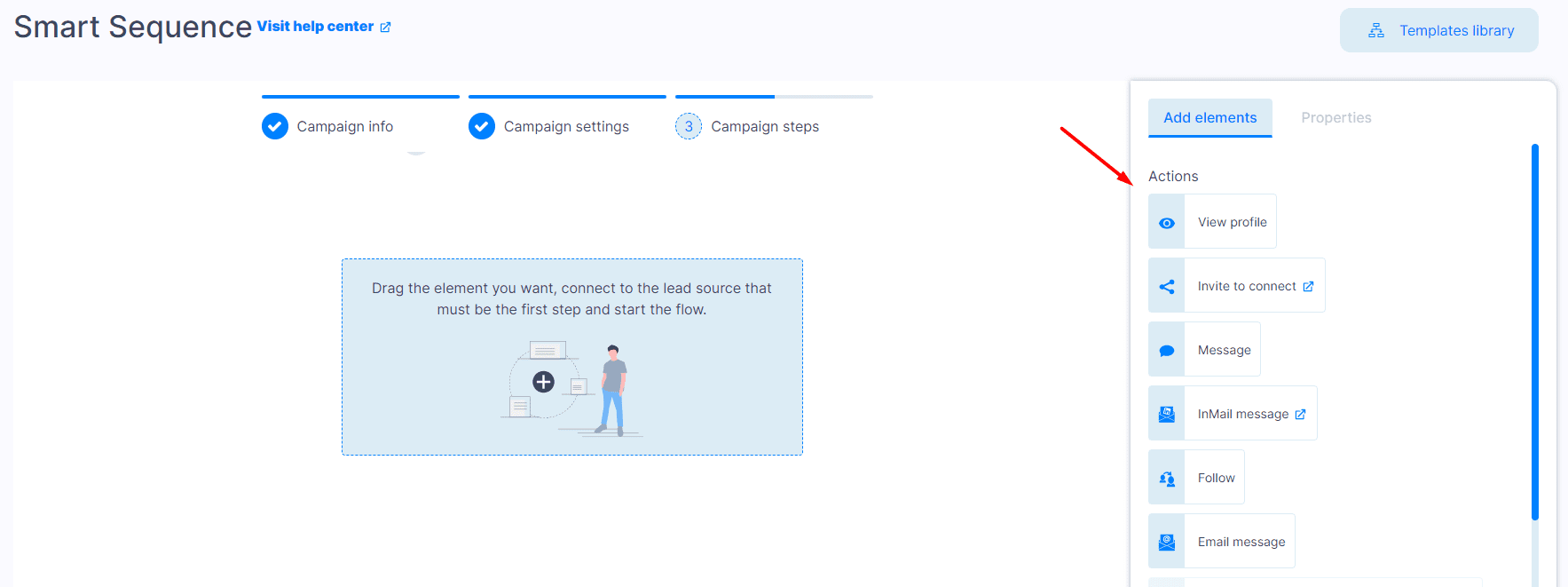
Your finished sequence should look something like this.
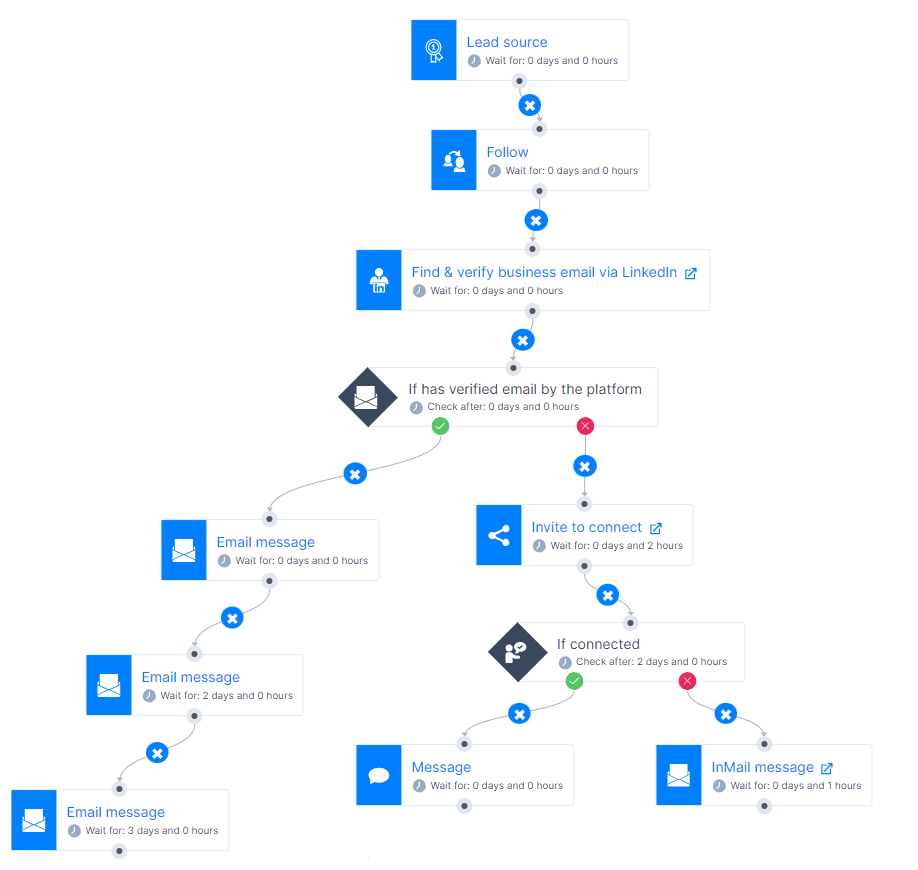
To make your lead acquisition process successful, personalize your outreach messages with variables such as the prospect’s name, company, etc.
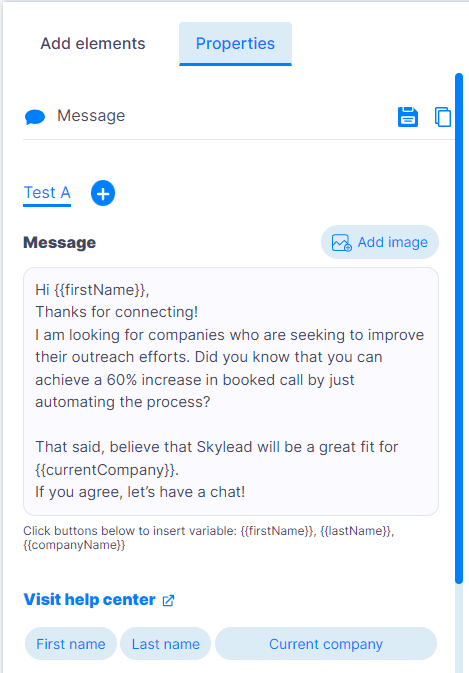
We also advise including personalized images and GIFs to stand out and get a higher response rate.
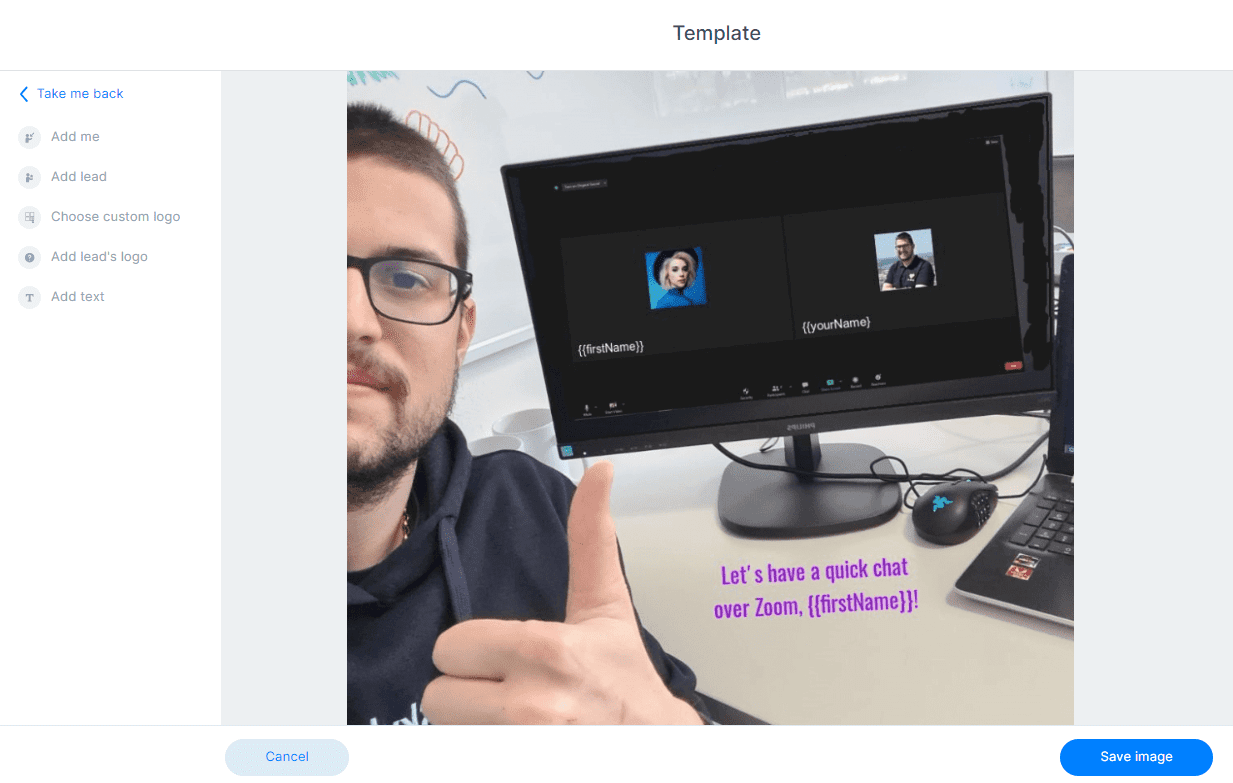
Once your messages are in place, the only thing left to do is to hit the Start campaign and watch the magic happen!
3. Utilizing CRM and Smart inbox to nurture leads
Once your campaign is live and the leads start responding, go to Skylead's Smart Inbox page. Here, you can manage all of your prospects' LinkedIn and email messages. This way, you can interact with them, nurture and convert without navigating between different platforms.
Moreover, you can save reply templates for quicker replies and create labels to prioritize leads. It's as simple as that.
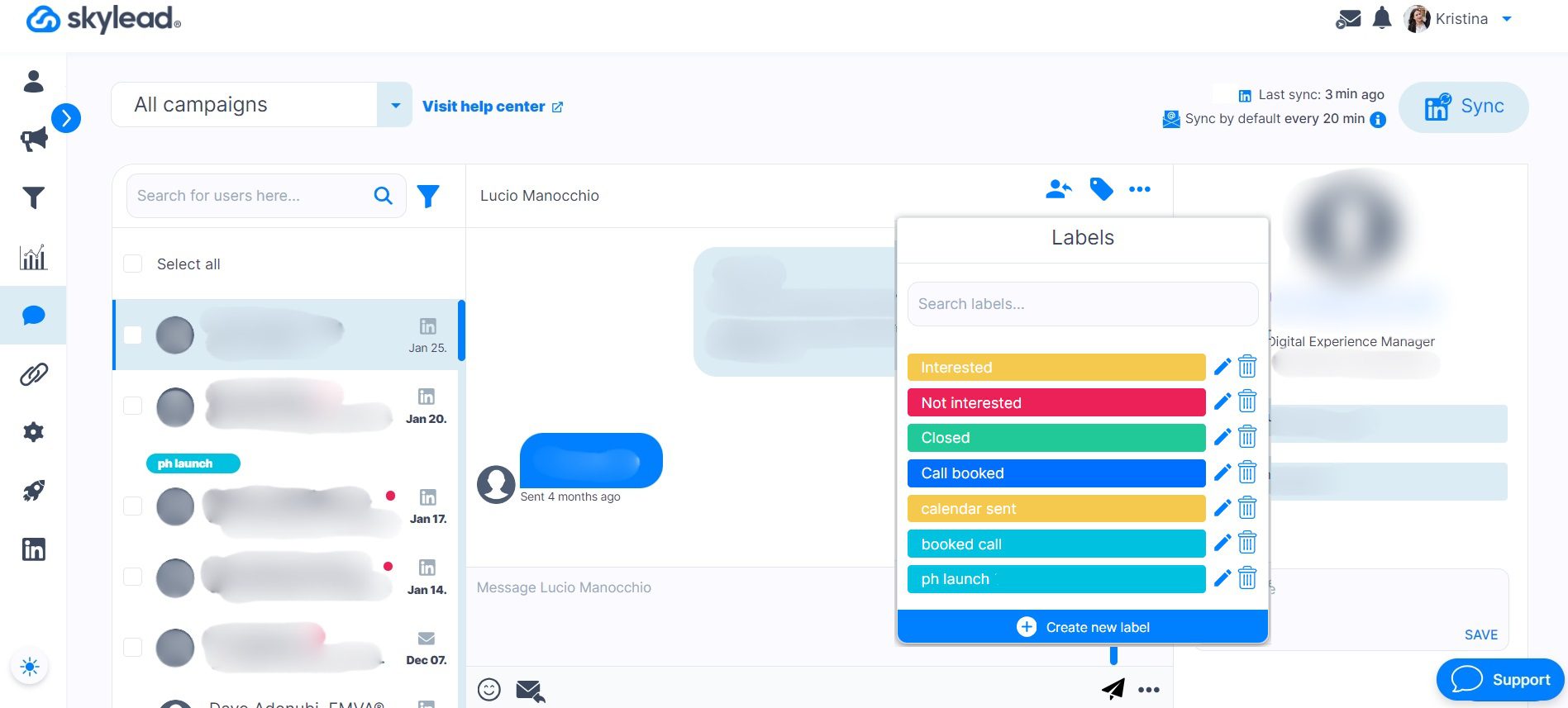
If you feel you need more organization with your leads, you can also use a CRM system to keep track of them.
Why should your business choose a lead generation tool as part of your lead acquisition process?
If you're a business looking to generate leads, you have two options:
- manual lead generation
- or choosing automated tools to do it for you.
However, there are several reasons why automated tools may be a better choice for you.
1. You’ll get better ROI.
Firstly, Using an automated outreach tool as a part of your lead acquisition process can significantly enhance your return on investment (ROI). These tools streamline connecting with potential clients by automating repetitive tasks, allowing your team to focus on more strategic activities.
Automated outreach tools increase engagement rates and conversion potential by ensuring timely, consistent, and personalized communication. This efficiency not only saves time and reduces labor costs but also maximizes the impact of your marketing efforts, ultimately leading to higher ROI.
2. You’ll receive stronger opportunities for lead development.
Secondly, lead acquisition provides stronger opportunities for lead development. Acquired leads often come with a higher level of engagement and interest. Thus, your sales and marketing teams will have more to work with in terms of nurturing and conversion.
3. Lead acquisition becomes more cost-efficient.
Additionally, lead acquisition becomes more cost-efficient because acquiring leads through outreach tools come at a fraction of the cost.
This cost-effectiveness allows businesses to stretch their budgets further and allocate resources more strategically.
4. You’ll get more time to nurture your leads.
By streamlining a part of the acquisition process, you can devote valuable resources to building relationships and guiding prospects through the sales funnel. This allows for a more personalized approach, resulting in higher conversion rates and increased customer loyalty.
5. You’ll get more control.
Finally, automating a part of lead acquisition gives you more control over your LinkedIn lead generation efforts and ability to scale.
What is the lead acquisition cost? Lead acquisition cost formula
Lead acquisition cost (LAC) refers to the expenditure incurred in acquiring a new lead for a business. It encompasses all expenses associated with attracting, capturing, and nurturing leads until they become customers.
The formula for determining LAC is relatively straightforward:
- divide the total cost of lead generation activities by the number of leads generated within a specific period.
| LAC = Total Cost of Lead Generation Activities / Number of Leads Generated |
To compute LAC accurately, start by identifying all costs related to lead generation, including,
- advertising expenses,
- marketing software subscriptions,
- personnel salaries,
- Sales-related expenses
- Tools and resources used for lead generation
- and any other relevant overhead costs.
Then, sum up these costs to obtain the total expenditure.
Next, tally the number of leads generated during the same timeframe.
Finally, divide the total cost by the number of leads to derive the LAC per lead.
Lead acquisition Vs. Customer acquisition - Differences
Lead acquisition is a subset of customer acquisition. Lead acquisition focuses on identifying and gathering information about potential customers (leads) who have shown interest in your product or service. This process involves activities such as generating interest, capturing contact details, and nurturing these leads until they are ready to make a purchase decision.
Customer acquisition, on the other hand, encompasses the entire process of converting leads into paying customers. It includes lead acquisition as the initial step but goes further to involve strategies and activities aimed at nurturing leads, closing sales, and retaining customers.
Here are the core differences between lead acquisition and customer acquisition.
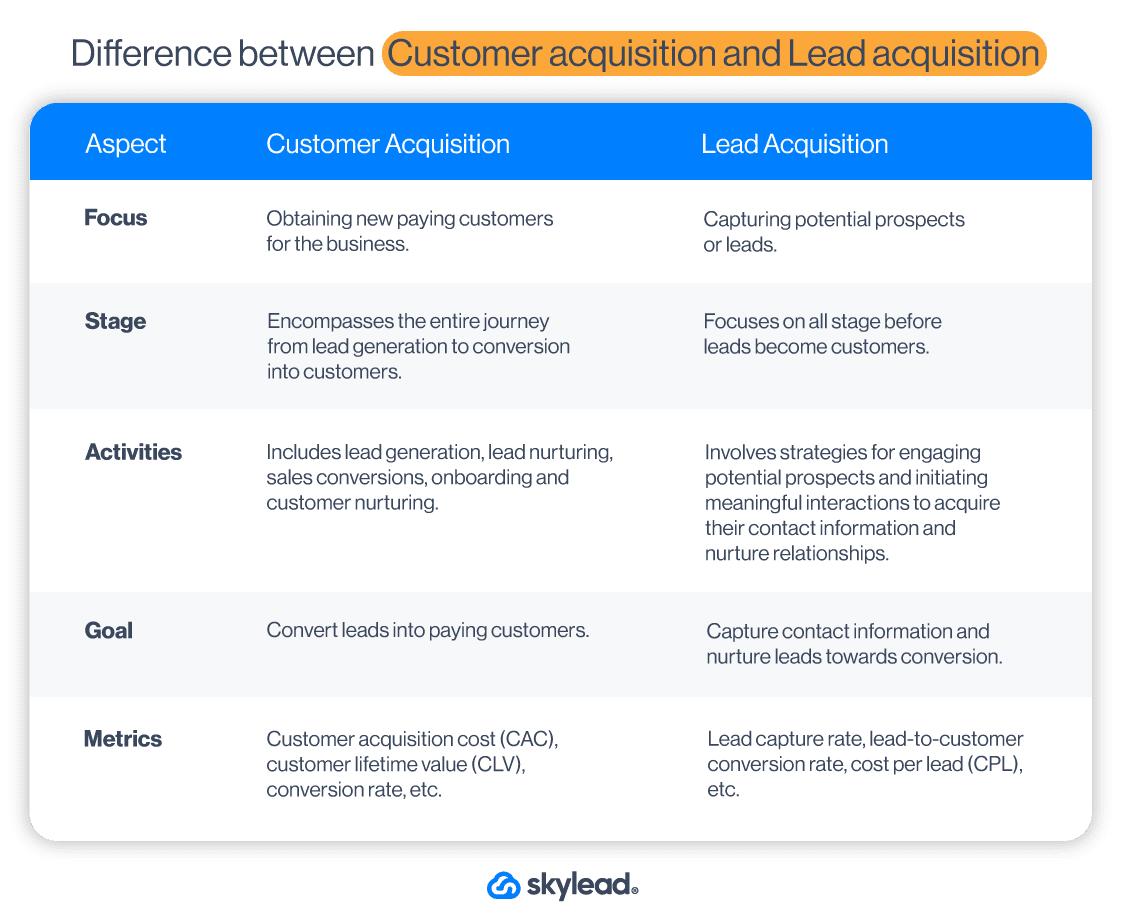
What are lead acquisition channels?
Lead acquisition channels are the different ways businesses attract, engage, and convert potential customers into sales.
Here are some of the lead acquisition channels you can opt for.
1. Email
Email is a powerful channel for acquiring leads and driving sales. It involves:
- Engaging prospects through various channels: Sending cold, personalized messages to your prospects via email, LinkedIn, etc.
- Sending targeted content: Delivering newsletters, and promotional offers to nurture leads and turn them into customers over time.
2. Organic Social Media interaction
Social media platforms like Facebook, Twitter, LinkedIn, and Instagram play an important role in reaching potential customers. Sales teams can leverage social media by:
- Sharing helpful content: Providing value to their audience as individuals and nurturing connections that lead to sales.
- Interacting with the leads: Engaging with your prospects to build relationships and trust.
As a go to strategy, you can simply use and rely on LinkedIn as a lead acquisition channel.
LinkedIn has proven to be highly effective for B2B lead prospecting and generation. Its professional network offers unparalleled opportunities for businesses to connect with potential clients, establish thought leadership, and generate quality leads.
You can share helpful content regarding your services or portray the problem-solving nature of your product. And then, share that helpful content with potential prospects to build trust and credibility.
3. Social Media advertising
For marketing teams, advertising compliments organic social media efforts by:
- Targeting specific demographics and interests: Reaching potential customers with custom ads.
- Boosting visibility: Increasing brand awareness and driving traffic to generate leads. Social media advertising is a complex landscape that requires strategic planning, creative content, and data-driven insights to effectively reach and engage target audiences. This area is often being done in-house or outsourced to social media marketing agencies to save costs on A/B testing.
4. Search engine optimization [SEO]
Another great channel for attracting customers is through online searches. By optimizing website content to match search intent, businesses can:
- Appear higher in search results: Increasing visibility and attracting more visitors.
- Generate more leads and sales: Capturing the attention of potential customers at the right moment.
Each of these lead acquisition channels plays a vital role in the sales process, from attracting potential customers to converting them into paying clients.
Why is it hard to acquire leads?
It's challenging to acquire leads due to various factors. Marketers face difficulties in capturing potential customers' attention amidst the vast array of marketing channels available.
Cold calls, once a common tactic, are now largely ignored, with 97% of recipients disregarding them. Generating leads also requires investment; the mean cost per lead across industries is $198.44.
Additionally, not all organizations have a clear understanding of their lead generation efforts, with 12% of marketers admitting uncertainty about the number of leads they generate. Moreover, accessing accurate data is crucial for effective lead generation, yet nearly 40% of marketers believe their efforts could improve with better data.
Lead quality is another concern, with sales teams frequently encountering issues such as poor lead readiness to buy or difficulty in contacting leads.
Time constraints pose a significant challenge as well, with sales reps often too busy to promptly follow up with leads, hindering the conversion process.
Why does lead acquisition matter?
One key reason why lead acquisition matters is its direct impact on sales revenue.
When a company gets leads, it increases its chances of turning potential customers into paying ones. Also, good ways of getting leads help companies get more customers and find new markets. If a company doesn't consistently get leads, it might struggle to make sales and keep up with other businesses.
That's why businesses of all sizes utilize automated tools to streamline their sales processes. And this is where Skylead comes in to manage your lead acquisition process effectively!
Register for a free trial today and take your lead acquisition to new heights with Skylead by your side!

